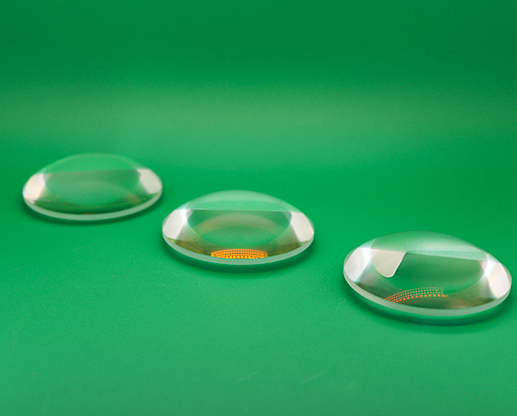Biconvex lens: the master of focusing in the optical world and its application in camera lenses
May. 14, 2025
In the brilliant galaxy of the optical world, the Biconvex lens is like a unique star, attracting the attention of countless optical researchers and photography enthusiasts with its distinctive optical properties and broad application fields. As a type of Biconvex lens, it consists of an incident surface and an exit surface, characterized by a longer focal length in the middle part of the lens surface and shorter focal lengths at the ends. This unique design enables the Biconvex lens to excel in light focusing and imaging, making it an indispensable key component in photographic and video systems.
In the camera lens,the double convex lens plays a crucial role. It is one of the core components for image formation, working together with other lenses to capture, focus, and form images. In the structure of a camera lens, the double convex lens is typically placed at the front or middle of the lens, serving as the first barrier or intermediate convergence point for light entering the lens.

In the initial stage of light capture, the biconvex lens utilizes its ability to converge light rays, effectively collecting and guiding light from objects into the lens. When photographing distant objects, the biconvex lens can focus the light from these distant objects more tightly, allowing this light to form a clear real image on the image sensor. This focusing effect not only improves the utilization of light but also enhances the lens's ability to capture distant objects, enabling photographers to capture clear images at greater distances.
During the focusing process, the double convex lens works in conjunction with other lenses to precisely adjust the position and focal length of the lenses to focus light accurately onto the image sensor to ensure the clarity and accuracy of the image.
When it comes to imaging, the biconvex lens works in conjunction with other optical components to ensure accurate color reproduction and rich detail. After the image sensor converts light signals into electrical signals, they undergo a series of processes before presenting the final image we see. In this process, the biconvex lens fine-tunes the light through its unique optical properties.
When it comes to lens applications, telephoto lenses are typically used for capturing distant objects, such as wildlife and sports events. In these shooting scenarios, photographers often cannot get close to the subject, so they need to rely on the magnification provided by a telephoto lens to capture clear images. As one of the key components in a telephoto lens, the biconvex lens effectively collects and guides light from distant objects into the lens through its ability to focus light.
Taking the macro lens as an example, the double convex lens also demonstrates its unique application value. Macro lenses are used to photograph tiny objects such as insects and flowers. In these shooting scenarios, photographers need to capture the details and textures of the subjects, thus requiring high resolution and clarity from the optical lens. The double convex lens, with its excellent focusing ability and reduced aberration, enables the macro lens to capture clear images of small objects at close range. It can focus light precisely onto the image sensor, producing images with clear textures, meeting the photographer's needs for photographing tiny objects.
About CLZ Optics
CLZ Optical Co., Ltd. is a leading Chinese manufacturer specializing in high-precision optical components and custom optics solutions. With decades of experience in optical design, manufacturing, and quality control, CLZ Optics provides a broad range of products including plano-convex lenses, biconvex lenses, concave lenses, prisms, optical windows, filters, and custom glass optics for industries such as photography, laser systems, medical devices, and scientific research.
By combining advanced manufacturing techniques and deep optical expertise, CLZ Optics continues to innovate and provide high-performance optical components for global customers, supporting applications from everyday imaging devices to complex scientific instruments.





















